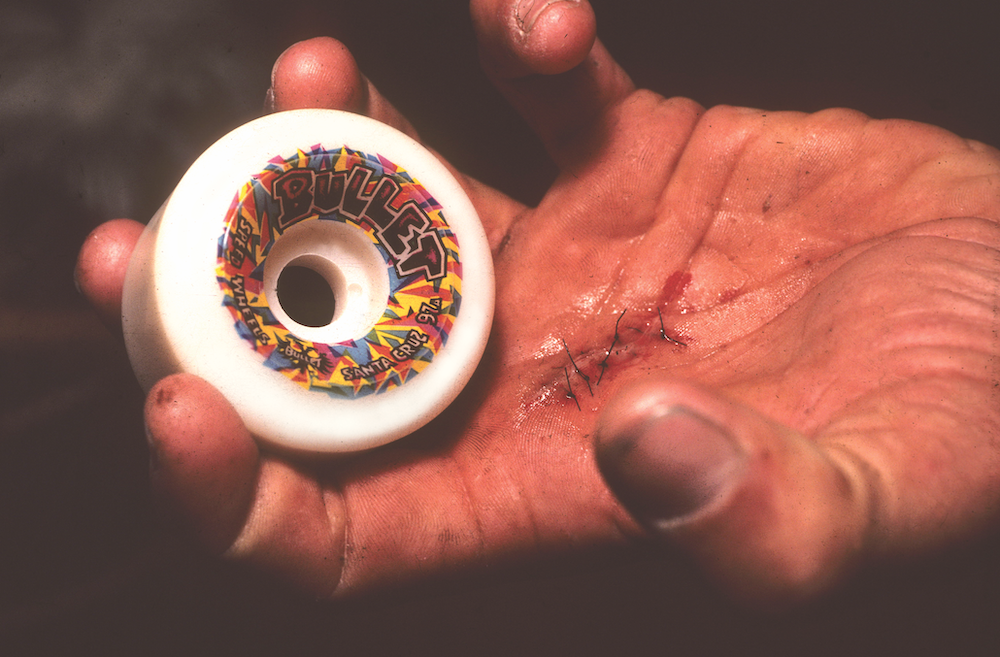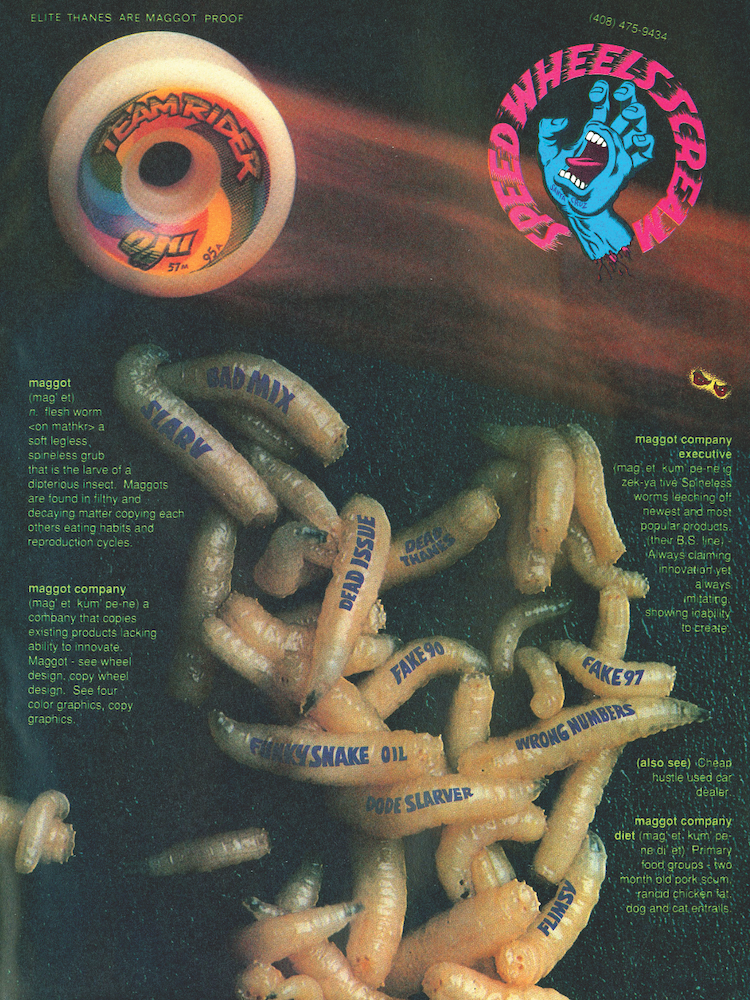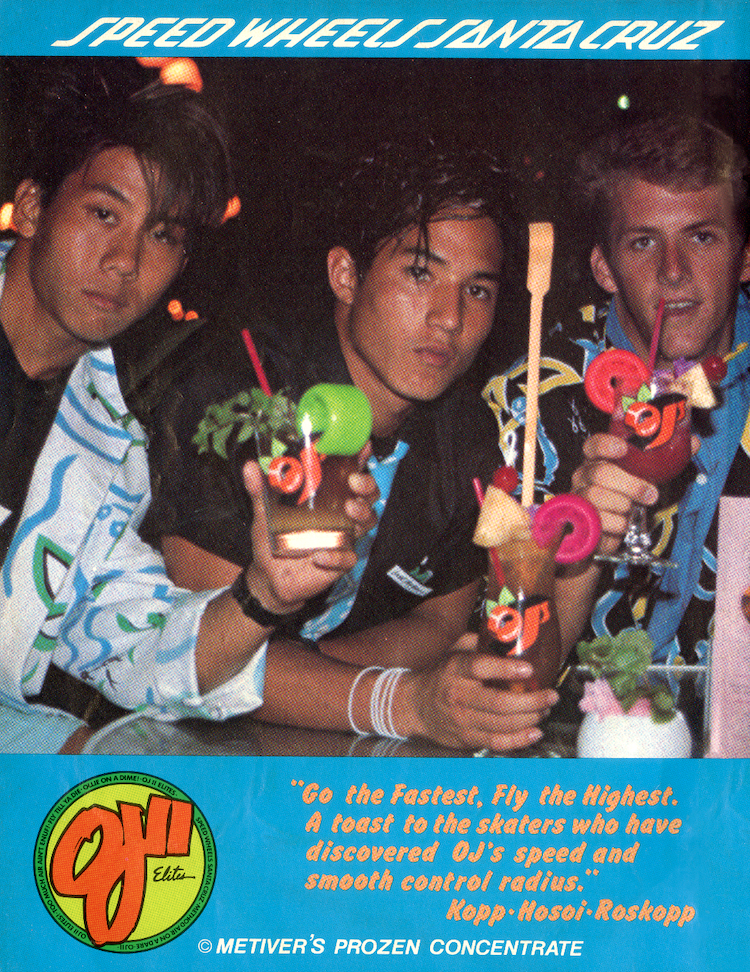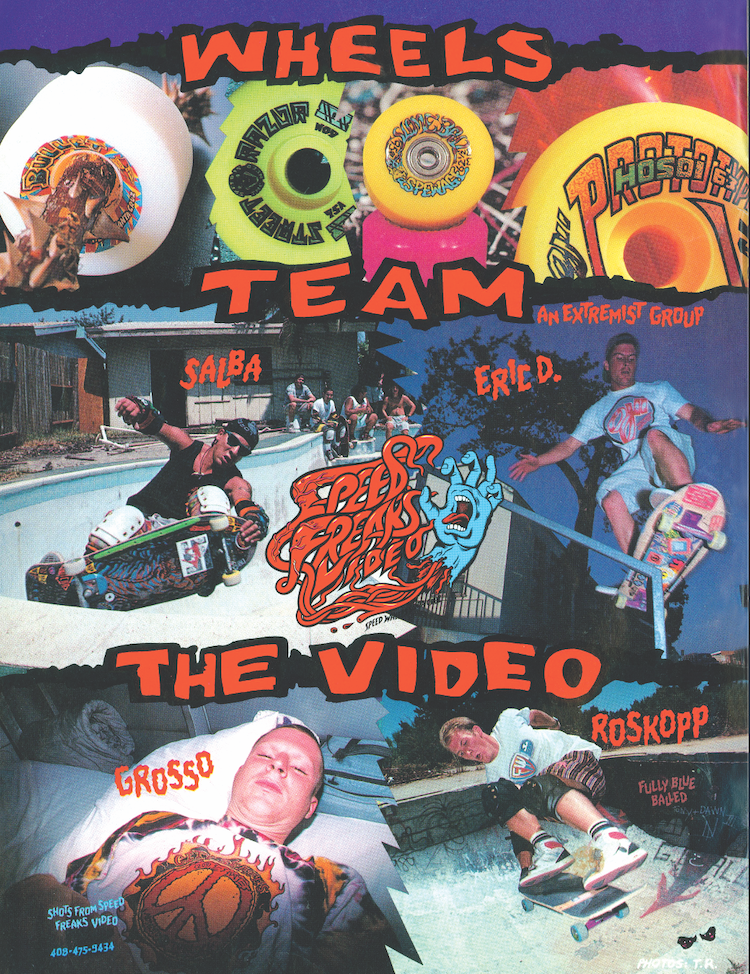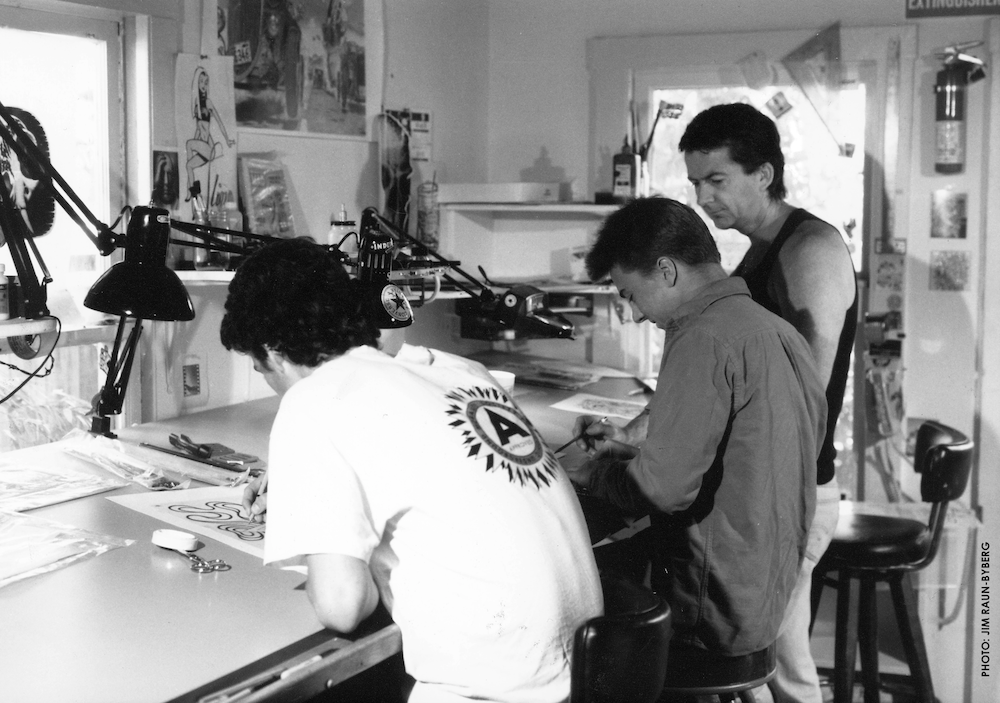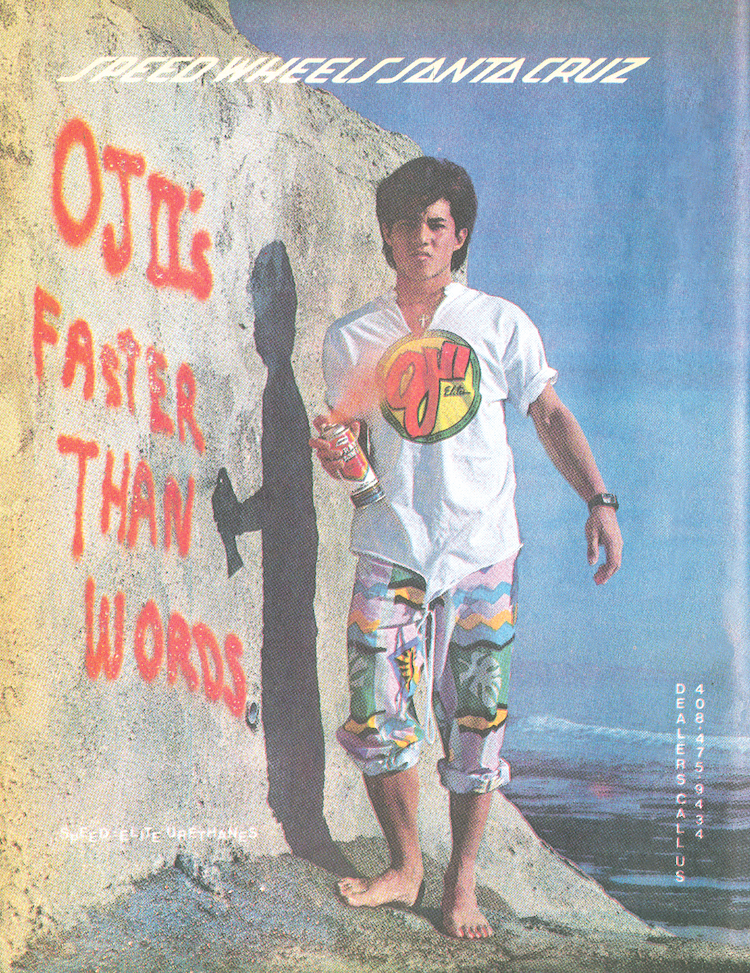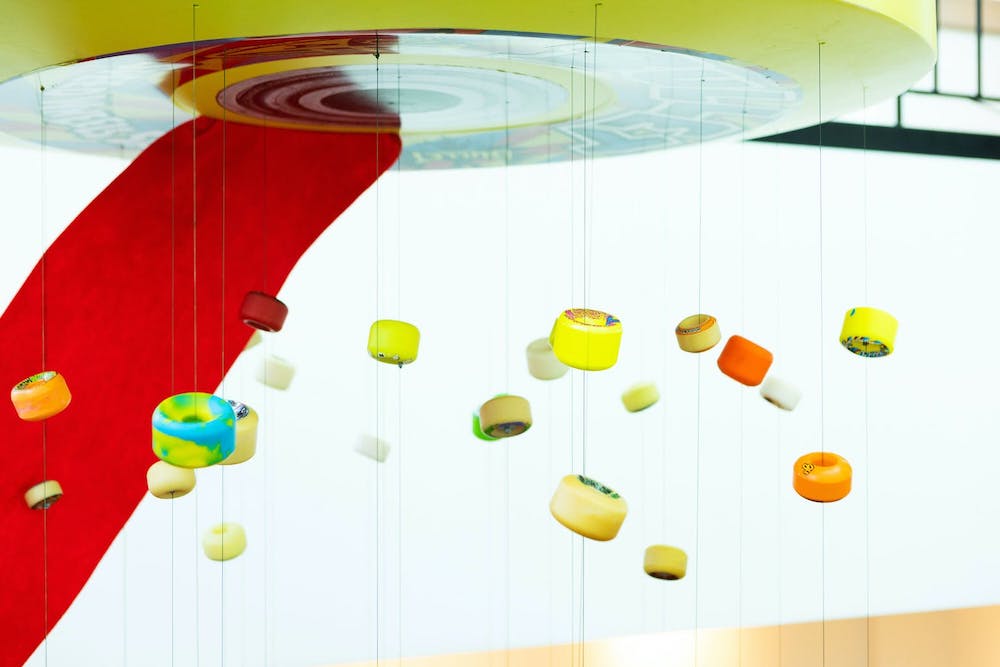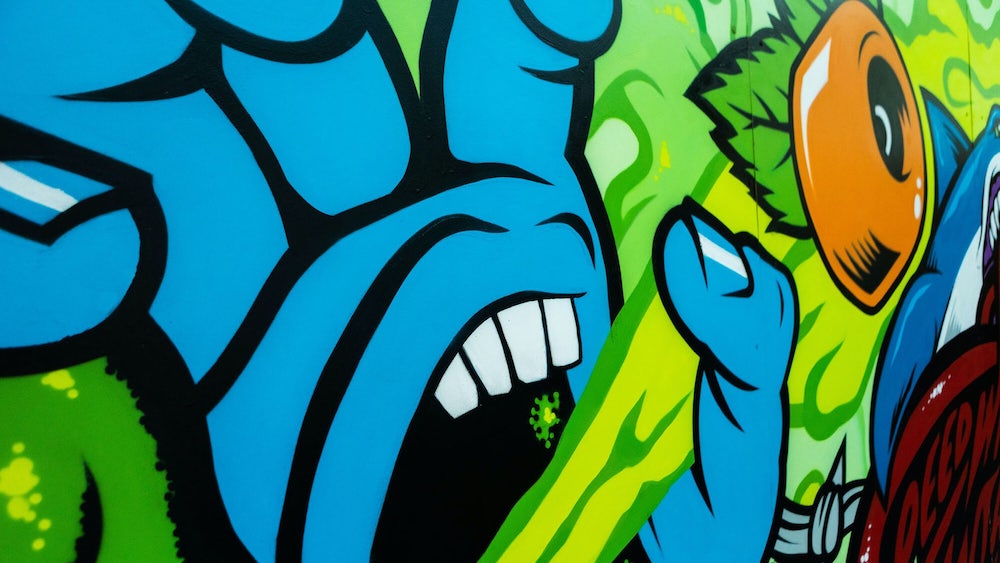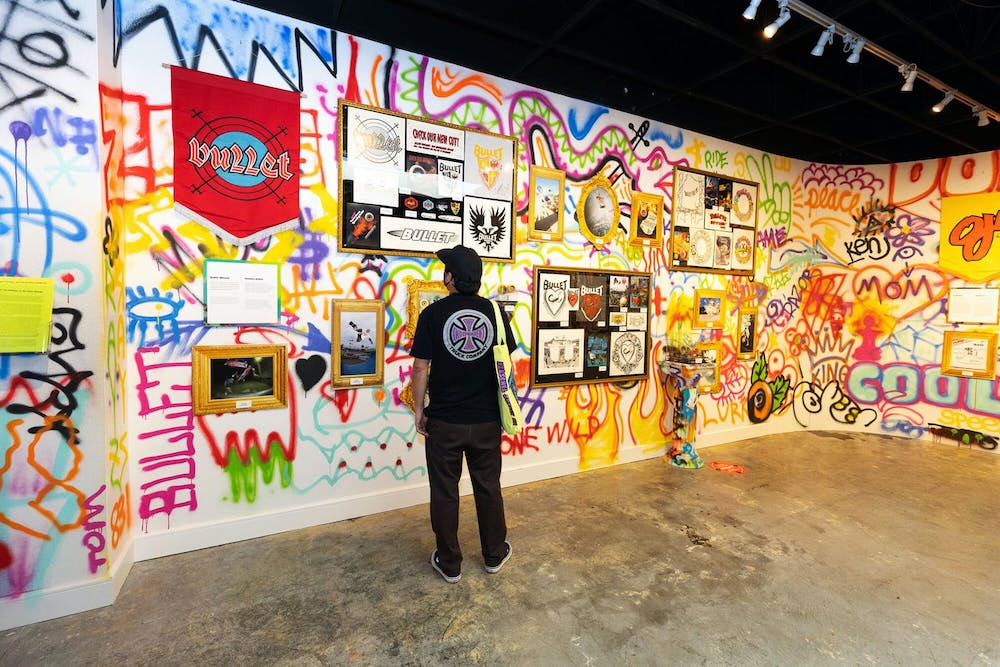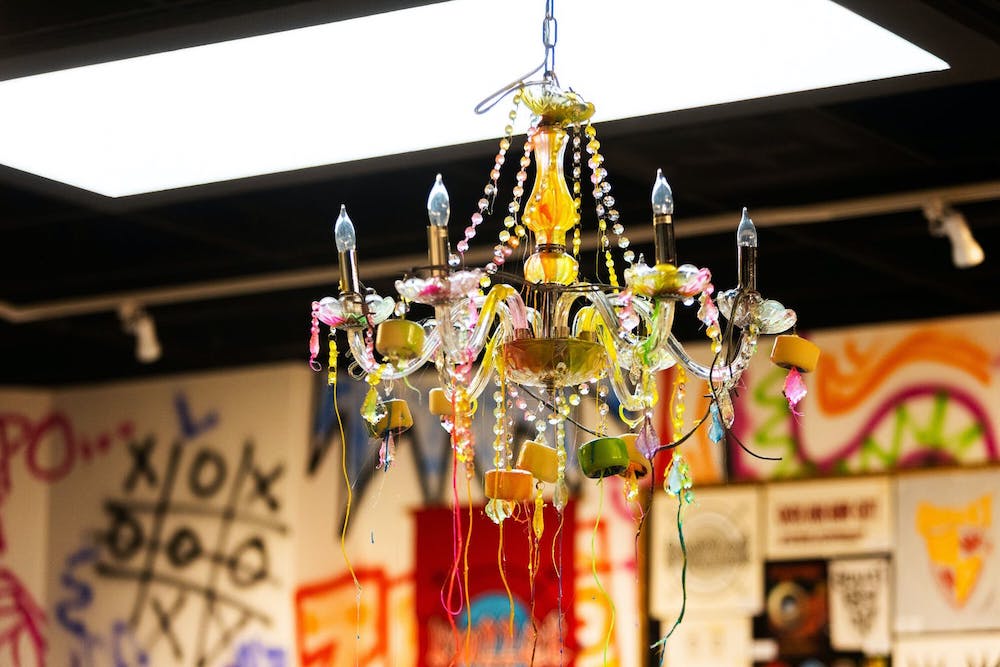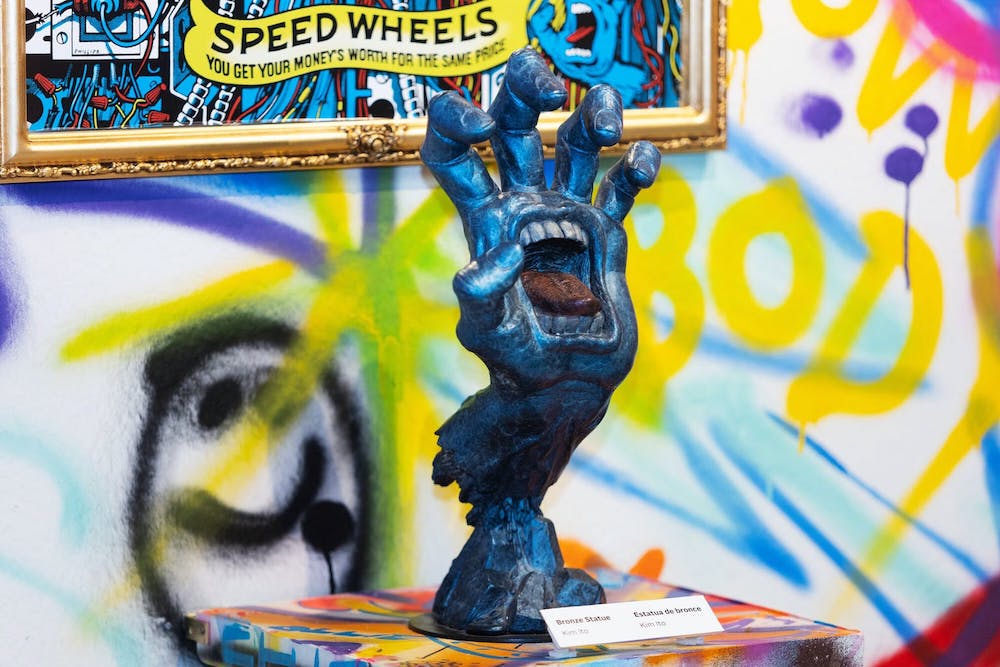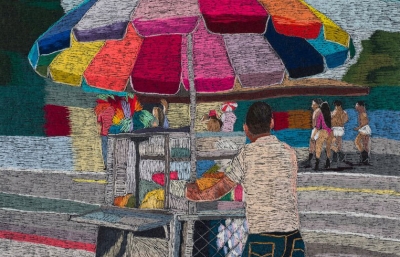The mid-1980s is widely regarded as the golden age of skateboard graphics, yet that focus is almost exclusively directed towards the images on the bottoms of the boards themselves. Very little attention has been paid to the small, round, printable objects spinning just below the deck—the polyurethane wheel. Wheel graphics were born in the 1980s, and their visual history is equally as compelling as their seven-layer counterpart’s. It’s important to note that Speed Wheels Santa Cruz is responsible for bringing full-color graphics to the world of wheels. How, you might ask? Good question. Let’s start at the beginning.
Skateboard wheels used to be boring and stupid. In the 1950s, they were metal—stolen from roller-skates. In the ’60s, they were made out of a clay composite, which was only slightly better than metal. And in the ’70s, the polyurethane wheel entered the picture (thanks to Frank Nasworthy), changing the game forever. Although urethane wheels came in different colors, they were somewhat aesthetically mundane, as nobody had yet figured out how to apply graphics onto their surface. By the time the ’80s rolled around, one-color images—primarily text or simple logos—could be printed onto the side of wheels, but Richard Metiver at Speed Wheels knew there had to be a way to bring full-color graphics into the world of wheel manufacturing.
By appropriating technology used to apply images onto Christmas-tree ornaments, Speed Wheels unlocked the secret for vibrant, multi-colored wheel graphics, thus blowing the doors wide open. The new printing equipment came with a hefty price tag, though—the technology was a $250,000 investment. But the company had a not-so-secret ace up their sleeve—the formidable talents of Jim Phillips, who was manning their art department. Having Jim and his studio oversee the Speed Wheels brands probably made the quarter-of-a-million-dollar gamble seem totally worth the risk.
Jim Phillips is undoubtedly one of skateboarding’s greatest graphic illustrators. From the late ’70s to early ’90s, he penned some of the most iconic skate imagery to date (think Screaming Hand). During his tenure at Speed Wheels, he oversaw the art direction of the following urethane brands: Bullets, OJIIs, Hosoi Rockets, and my personal favorite—Slime Balls. The success of these companies was due in no small part to his unmistakable artwork, but the marketing was also crucial to their successes. The top-tier riders, photos, videos, ads, stickers and T-shirts all created a cohesive universe filled with progressive skating, paired with humor and dangerous/disgusting imagery. What skate rat in the ’80s wouldn’t be drawn to razors, skulls, vomit, brains and maggots? Dorks, that’s who.
Speed Wheels dominated the market share in the ’80s, however, the ’90s brought about radical changes in skateboarding—wheels got so small you could barely fit a graphic on them, kids chose cookie-cutter rip-off graphics over original art, and many of the legacy brands (Santa Cruz included) were no longer deemed hip by the tastemakers. Time, like a wheel, is circular, though, and the art of Santa Cruz Speed Wheels is once again being celebrated by the four-wheeled community. And, with a retrospective, The Art of the Santa Cruz Speed Wheel, on display at the Santa Cruz Museum of Art & History, the timing seemed apt to share some images of the brand’s rich history alongside words from essential figures and artists inspired by it all. —Michael Sieben
The Art of the Santa Cruz Speed Wheel will be on view at the Santa Cruz Museum of Art & History through January 2, 2022. Throughout the fall, go to Juxtapoz.com for exclusive stories from the skaters, artists and brand managers on the history of Speed Wheels.

